New Chromatography Columns and Accessories at Pittcon 2011: Part II
LCGC North America
A review of the gas chromatography columns, sample preparation, and chromatographic and sample preparation accessories that were presented at Pittcon 2011.
Ron Majors presents the second part of his yearly report on new products introduced at Pittcon 2011. This installment covers gas chromatography columns, sample preparation products, and hardware, accessories, and small tabletop instruments.
Pittcon 2011 Conference and Expo (more formally known as the 62nd Pittsburgh Conference on Analytical Chemistry and Applied Spectroscopy) returned to the Georgia World Congress Center in Atlanta March 13–18, 2011, after a 13-year hiatus. This year's event hosted nearly 800 instrument manufacturers and laboratory suppliers in more than 1700 booths. In addition to attending the exposition, the conferees listened to around 1800 technical presentations (orals, posters, workshops, invited and contributed talks, and award symposia), checked numerous company seminar rooms, or attended one or more of 84 short courses.
Compared to Pittcon 2010 (1,2), attendance at this year's event was basically flat. Still, Pittcon remains the most important yearly international analytical exhibition where companies introduce their latest instruments, instrument accessories, software, columns, sample preparation, and other consumable products. Because many past attendees have purchased one or more new products within three months of attending the show, most exhibitors attempt to maximize their booth traffic to meet as many potential customers as possible.
The purpose of this report is to provide information about many of the new separation consumables and accessory products that were displayed at Pittcon 2011. In some cases, products that were introduced during 2010 but after Pittcon 2010 (1,2) were included for reasons of completeness. The information is based on manufacturers' responses to a questionnaire mailed in late 2010. Because of space limitations and the fact that some manufacturers did not respond to the questionnaire, this report cannot be considered an exhaustive listing of all new products introduced in Atlanta. However, over the years, these Pittcon introduction summaries have provided a good source of information that would be difficult for one individual to gather during the four days of the exhibition. In addition, the products introduced have shown definite correlations to current research, development, and application activity in the separation sciences.
As in previous years, columns and other products recommended by their manufacturers primarily for biomolecule separations or sample preparation are denoted in the tables with the designation BIO. Some of these products may be used for general high performance liquid chromatography (HPLC) separations as well, but their main emphasis is for biological samples.
Last month (3), I covered HPLC columns. In this month's coverage, I will look at gas chromatography (GC) columns, sample preparation products, hardware, accessories, and a few small tabletop instruments.
Gas Chromatography
Although GC is considered to be a relatively mature separation technique, new GC columns continue to be introduced each year at Pittcon (Table I). This year saw the introduction of nine new GC columns: seven wall-coated open tubular (WCOT) and two porous-layer open tubular (PLOT) columns from six vendors. Supercritical fluid chromatography (SFC) has been receiving more attention, and this "intermediate" separation technique is catching on, especially in the pharmaceutical area for preparative applications. Packed SFC columns are more like HPLC columns but have some unique phases not found in a typical LC laboratory, so I decided to include them in this section instead of in my Pittcon Part I coverage (3). Three vendors displayed SFC columns, including one with a sub-2-µm particle column that provides the same throughput advantage in SFC as it does in HPLC.
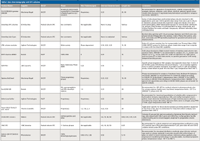
Table I: Gas chromatography and SFC columns
Applications-specific GC columns are always popular introductions at Pittcon. This year, a majority of the columns were for specific application areas. GC has found widespread usage in the petroleum industry. The PLOT columns were developed for the analysis of volatiles in hydrocarbon streams. The Restek (Bellefonte, Pennsylvania) MXT-Alumina Bond PLOT column was recommended for C1-C3 isomers and alkanes up to C12, while the Agilent J&W Scientific (Santa Clara, California) Select Low Sulfur column was designed for trace-level determination of volatile sulfur components in hydrocarbon streams. A column for simulated distillation methods in the petrochemical industry was introduced by Phenomenex (Torrance, California): A glass coating was applied to the interior of a metal column, then a special crosslinked phase was bonded to the glass that allows for operation at temperatures as high as 450 °C.
In the environmental domain, an applications-specific column for the United States Environmental Protection Agency's polynuclear aromatic hydrocarbons (PAHs) Methods 610 and 8100 was introduced by J&K Scientific (Milton, Ontario, Canada). Using a 12 m × 0.10 mm capillary column, the separation of 18 PAHs can be accomplished in less than 11 min with full resolution of the critical pairs (shown in red in Figure 1). Besides the 16 EPA PAHs, the test mixture also included 1-methyl and 2-methyl naphthalenes to satisfy the Canadian standards for PAHs. The results were equally impressive for split and splitless sample injections.

Figure 1: Fast analysis of PAHs using a microbore capillary column. Column: 12 m à 0.10 mm NSP-PAH (610). (Courtesy of J&K Scientific.)
Other applications-specific GC capillary columns introduced at Pittcon included those for chiral separations, biodiesel fuel separations, residual solvents in pharmaceuticals separations, and blood alcohol separations.
Columns for SFC are based on HPLC-like packings but contain different phase chemistries, usually normal-phase materials. For example, 2-ethylpyridine is a popular SFC phase for the SFC separation of basic compounds; this phase has not proven to be popular in HPLC. Some SFC phases, such as pentafluorophenyl (PFP) and diethylaminopropyl (DEAP), have found use in LC. Silica gel itself also has been used as an SFC adsorbent.
Sample Preparation Products
As indicated in Table II, Pittcon 2011 was another productive conference and exposition, with 34 new sample preparation products or families of products displayed. Not counted were sample preparation accessories (Table III), which will be covered later. Most popular application areas included various pollutants in environmental samples, drugs and drug metabolites in biological fluids, drugs of abuse, and pesticides in fruits and vegetables.
Many of the products were for solid-phase extraction (SPE) and just about every mode (reversed phase, strong and weak anion and cation exchange, adsorption–normal phase, molecular imprinting, mixed mode) was represented. A wide variety of media was introduced at Pittcon, including polymer-based, graphitized carbon black, silica-based bonded phases, alumina, diatomaceous earth, drying agents, and other salts.
About half of the SPE products introduced at Pittcon 2011 were polymer-based. Polymeric SPE products are particularly attractive because they can dry out during the conditioning steps without affecting the recovery and reproducibility of the SPE experiment. They also can be treated with more aggressive washing solvents than silica-based sorbents because their pH range is greater. Another advantage of the polymeric SPE sorbents is that they often display mixed mechanisms, and multiple interactions can be used to retain analytes or matrix compounds selectively. Because the surface area of polymers is higher than silica-based bonded phases, a smaller amount is used in cartridges and well plates. Thus, smaller amounts of sample and solvents, as well as faster extraction times and faster evaporation times with reconstitution, are required.
For the third year in a row, additional products for QuEChERS were introduced. Pronounced "catchers," QuEChERS is an acronym for quick, easy, cheap, effective, rugged, and safe sample preparation. This method is an emerging technique becoming increasingly popular in the area of multiresidue pesticide analysis in food and agricultural products. In QuEChERS, food–agricultural samples are extracted first with an aqueous miscible solvent (for example, acetonitrile) in the presence of high amounts of salts (for example, sodium chloride and magnesium sulfate) or buffering agents (such as citrate) to induce liquid-phase separation and stabilize acid- and base-labile pesticides, respectively. After shaking and centrifugation, an aliquot of the organic phase is subjected to further cleanup using SPE. Unlike traditional methods using SPE tubes, dispersive SPE (d-SPE) cleanup is conducted by mixing bulk amounts of SPE sorbent and additional MgSO4 with the extract. After sample cleanup, the mixture is centrifuged and the resulting supernatant either can be analyzed directly or can be subjected to minor further treatment before analysis. Three new QuEChERS products were submitted for inclusion into this article (see Table II). For those interested, a brief introduction to the technique was published in an earlier "Sample Prep Perspectives" column (4). One aspect of this "just enough" sample preparation technique is that it is now extending beyond the analysis of pesticides in fruits and vegetables and has been used for additional classes of analytes in a diverse number of matrices (for example, antibiotics in meat and PAHs in soil).
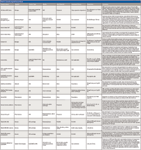
Table II: Sample preparation products
Besides QuEChERS, which is mainly used in food safety analysis, other applications-specific SPE phases were introduced this year. In the environmental area, the SPE technique is now well-accepted by regulatory agencies as a substitute for older methodologies such as liquid–liquid extraction (LLE). New SPE products for EPA Method 537 for perfluorinated acids in drinking water and EPA 550.1 for PAHs in environmental samples were introduced at Pittcon. Other application-specific phases for hydrophilic (strong and weak acids and bases) and neutral compounds from biofluids and environmental samples, phospholipids from plasma and serum, fractionation of aliphatic and aromatic hydrocarbons from soil and drinking water, drugs and drug metabolites from plasma, and drugs of abuse were to be seen on the exhibition floor.
Two somewhat novel sample preparation techniques were introduced by Biotage (Charlotte, North Carolina) at Pittcon 2011. The supported liquid extraction (SLE) technique consists of small particles of diatomaceous earth packed into a cartridge. Figure 2 depicts the series of operations used to perform an extraction using this cartridge. An aqueous sample (usually buffered) is applied to the packed column, and it distributes itself by capillary action over the sorbent. The high surface area of the sorbent ensures that the sample is dispersed finely. Next, an immiscible organic liquid is percolated through the cartridge and comes in intimate contact with the aqueous sample. A liquid–liquid extraction is performed, just as might occur in a separatory funnel using the two immiscible phases. Because vigorous shaking is not required, there is no chance of an emulsion forming. The organic liquid containing the analyte or analytes of interest is recovered from the cartridge outlet. The analytes can be obtained by evaporation. The entire process is very reminiscent of conventional LLE but is much simpler and entirely on-line. New formats of SLE were introduced at the exhibition.
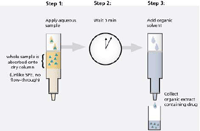
Figure 2: Steps in the use of supported liquid extraction. (Courtesy of Biotage.)
The second novel sample isolation technique was the introduction of molecularly imprinted polymers (MIPs) for very specific analyte extraction. A molecularly imprinted polymer is a polymeric sorbent synthesized in the presence of a target analyte. After the synthesis, the analyte is extracted away from the polymer, leaving an imprint with the dimensions of the analyte. When a solution is presented to the sorbent, the molecular imprint will absorb the analyte to a greater degree than other nonconforming analytes or matrix compounds. Table II shows a number of analyte-specific Affinilute MIPs displayed at Pittcon 2011.
Chromatography and Sample Preparation Accessories
Table III lists 38 new hardware products and accessories for HPLC, GC, CE, and sample preparation that were introduced at Pittcon 2011 in Atlanta. This year, I have extended the columns and sample preparation accessories to include small, benchtop-dedicated instruments that are designated to automate some of the sample preparation techniques reported in Table II. Some general chromatography products also are included here. All of the products introduced were practical devices designed to make the chromatographer's life easier. I will cover each area individually.
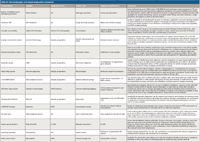
Table III: Chromatography and sample preparation accessories
General Chromatography Products: A number of products could be used with either GC or HPLC instruments. For example, the syringe filters and vials shown in Table III could be used for removal of particulates from any type of sample. A flow-switching device was useful for stream switching in either GC or LC. With column switching becoming fashionable in multidimensional chromatography, such devices are becoming more commonplace. A new family of chromatography consumables that were somewhat universal and could work on almost any instrument were highlighted.
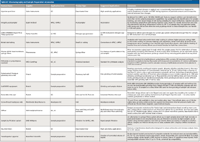
Table III: Chromatography and sample preparation accessories
UHPLC–HPLC, LC–MS, and Ion Chromatography Products: The advent of ultrahigh-pressure liquid chromatography (UHPLC) has spurred a number of ultrahigh-pressure products such as an auto-sampler capable of operation to 18,000 psi, very-high-pressure fittings (up to 30,000 psi), nickel-clad fused-silica tubing (higher pressure rating) and nickel-clad PEEK tubing (allows resistive heating), and a semiautomated filtration system for particulate removal. In addition, ultrahigh-purity solvents for UHPLC have come on the market. Other interesting products included nitrogen generators for LC–mass spectrometry (MS), a nanoLC trap column for on-line cleanup, and a simple column storage unit.
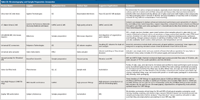
Table III: Chromatography and sample preparation accessories
GC Products: This year the introduction of a new generation of ultra inert, deactivated inlet liners, as well as color-coded liners, was noted at several booths. Figure 3 shows the selection of color-coded GC inlet liners introduced by SGE (Austin, Texas). The color coding represents different liner geometries to help simplify selection. A handy reference guide on their website provides more information on what type of liner should be used with a particular type of sample. An interesting reversible inlet seal that is said to have double the lifetime of a regular seal was shown. For connecting GC columns, a universal GC connector was introduced. A guard column specifically designed for SFC was seen for the first time. Other notable products included a purge-and-trap autosampler with some neat automation features, new headspace vials, and permeation tubes for detector calibration.

Figure 3: Color-coded GC inlet liners. (Courtesy of SGE.)
Sample Preparation Products: Always a popular area for new accessories, this year was no exception, including some clever sample preparation products. New microwave digestors and sample vessels were shown for those who have to prepare inorganic samples for chromatography or other analytical techniques. Evaporators designed for solvent blowdown help to speed up the sample concentration process. New designs of grinders and sample mills always show up at Pittcon, and this year, one specifically designed for QuEChERS samples was introduced. A couple of handheld transfer pipettes, including a digital version designed for very small samples as might be encountered in filling NMR capillaries, were shown.
Acknowledgment
I would like to thank the manufacturers and distributors that kindly furnished the requested information in advance of Pittcon 2011, thus allowing a timely report on new product introductions. For those manufacturers who would like to be considered for inclusion in Pittcon 2012 coverage, please send the name of the primary company contact, the mailing address, fax number, and e-mail address to Laura Bush, Editor, LCGC North America, c/o Advanstar Communications, 485F US Highway 1 South, Suite 100, Iselin, NJ 08830, Attn.: Pittcon 2012 "Column Watch".
References
(1) R.E. Majors, LCGC No. America 28(3), 192–210 (2010).
(2) R.E. Majors, LCGC No. America 28(4), 274–290 (2010).
(3) R.E. Majors, LCGC No. America 29(3), 218–235 (2011).
(4) R.E. Majors, LCGC No. America 25(5), 436–446 (2007).
Ronald E. Majors "Column Watch" Editor Ronald E. Majors is Senior Scientist, Columns and Supplies Division, Agilent Technologies, Wilmington, Delaware, and is a member of LCGC's editorial advisory board. Direct correspondence about this column via e-mail to lcgcedit@lcgcmag.com.

Ronald E. Majors
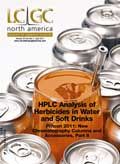
New Study Reviews Chromatography Methods for Flavonoid Analysis
April 21st 2025Flavonoids are widely used metabolites that carry out various functions in different industries, such as food and cosmetics. Detecting, separating, and quantifying them in fruit species can be a complicated process.
University of Rouen-Normandy Scientists Explore Eco-Friendly Sampling Approach for GC-HRMS
April 17th 2025Root exudates—substances secreted by living plant roots—are challenging to sample, as they are typically extracted using artificial devices and can vary widely in both quantity and composition across plant species.
Thermodynamic Insights into Organic Solvent Extraction for Chemical Analysis of Medical Devices
April 16th 2025A new study, published by a researcher from Chemical Characterization Solutions in Minnesota, explored a new approach for sample preparation for the chemical characterization of medical devices.
Sorbonne Researchers Develop Miniaturized GC Detector for VOC Analysis
April 16th 2025A team of scientists from the Paris university developed and optimized MAVERIC, a miniaturized and autonomous gas chromatography (GC) system coupled to a nano-gravimetric detector (NGD) based on a NEMS (nano-electromechanical-system) resonator.
Miniaturized GC–MS Method for BVOC Analysis of Spanish Trees
April 16th 2025University of Valladolid scientists used a miniaturized method for analyzing biogenic volatile organic compounds (BVOCs) emitted by tree species, using headspace solid-phase microextraction coupled with gas chromatography and quadrupole time-of-flight mass spectrometry (HS-SPME-GC–QTOF-MS) has been developed.











